Perhaps the most diverse of all the fifty states in the Union, California has a culture ranging from the easygoing surf spots on the beaches of Southern California to the glamour of Hollywood, and the counterculture and thriving businesses of the Bay Area. The state, which is on the west coast of the U.S., also varies greatly in natural beauty, from redwood forests on the North Coast to the ski resorts of the rugged Sierra Nevada mountains and the harsh desert of Death Valley. The largest state in the U.S. by population and one of the largest by area, California boasts world-famous attractions and sights: Disneyland, the Golden Gate Bridge, the Napa Valley wine country, and the tallest mountain in the contiguous United States, Mount Whitney.
California is geographically varied, ranging from warm beaches to snowy mountains to fertile farmland to extreme desert. In the middle of the state is the farmland of the Central Valley, which provides produce to the whole country. The conventional wisdom is that there is a huge difference—and also rivalry—between the Southern California area around Los Angeles (or as Californians often say, “LA”) and Northern California centered around the San Francisco Bay Area. However, the contrast between the (relatively wealthy) urban coastal areas and the (relatively poor) suburban and rural Central Valley is just as pronounced, if not more so.
 Here are a few of California's major cities.
Here are a few of California's major cities.
- Sacramento. – The laid-back state capital with historic area of the city, Old Sacramento.
- Bakersfield. – The world's largest Basque population outside of Spain is found here and fine Basque restaurants abound.
- Los Angeles. – The state's largest city, and 2nd-largest in the nation. L.A. is home to Hollywood, Venice, The Getty Center, and Griffith Park.
- Palm Springs. – Desert recreation with golf, spas, resorts, casinos, and the famous aerial tramway.
- San Diego. – Balboa Park, Old Town, SeaWorld, San Diego Zoo, and nearby Tijuana, Mexico.
- San Francisco. – Golden Gate Bridge, Alcatraz, America's largest Chinatown, cable cars, and Victorian houses
- San Jose. – South of San Francisco, home of the Winchester Mystery House, and the center of Silicon Valley, which is home to many technology companies.
- Santa Cruz. – A central coast city. The home of the historic Santa Cruz Beach Boardwalk, Mission Santa Cruz, and the Mystery Spot.
- Santa Barbara. – City on a south-facing coast which styles itself, with some justification, as "the American Riviera."
Sacramento. – The laid-back state capital with historic area of the city, Old Sacramento.
Bakersfield. – The world's largest Basque population outside of Spain is found here and fine Basque restaurants abound.
Los Angeles. – The state's largest city, and 2nd-largest in the nation. L.A. is home to Hollywood, Venice, The Getty Center, and Griffith Park.
Palm Springs. – Desert recreation with golf, spas, resorts, casinos, and the famous aerial tramway.
San Diego. – Balboa Park, Old Town, SeaWorld, San Diego Zoo, and nearby Tijuana, Mexico.
San Francisco. – Golden Gate Bridge, Alcatraz, America's largest Chinatown, cable cars, and Victorian houses
San Jose. – South of San Francisco, home of the Winchester Mystery House, and the center of Silicon Valley, which is home to many technology companies.
Santa Cruz. – A central coast city. The home of the historic Santa Cruz Beach Boardwalk, Mission Santa Cruz, and the Mystery Spot.
Santa Barbara. – City on a south-facing coast which styles itself, with some justification, as "the American Riviera."
- Disneyland. – this world-famous amusement park opened its doors in 1955 and today draws around 16 million yearly visitors. The California Adventure theme park was added in 2001 and provides attractions inspired by the state's scenery and movie industry.
- Lake Tahoe. – a deep blue mountain lake, popular for water sports in the summer and skiing in the winter.
- Napa Valley. – spas, wine tasting, wine tours; the historic heart of California Wine Country.
- Big Sur. – the Big Sur region can be loosely defined as the stretch of coastline between Carmel and San Simeon, and the steep cliffs, rocky coast, churning waves, abundant wildlife, redwoods, and remoteness make it a stunningly beautiful drive.
- Diablo Range. – the Diablo Range is the home of California's oak woodlands and traditionally was a key ranching region in the state. It is adjacent to the San Francisco Bay Area.
- Channel Islands National Park. – five remarkable islands (Anacapa, Santa Cruz, Santa Rosa, San Miguel, and Santa Barbara) and their ocean environment.
- Death Valley National Park. – a place of legend and a place of trial.
- Joshua Tree National Park. – the Joshua Trees found in the park can be seen in the picture to the right
- Lassen Volcanic National Park. – witness a brief moment in the ancient battle between the earth shaping forces of creation and destruction.
- Redwood National Park. – stand at the base of a coast redwood and even the huckleberry bushes tower over you.
- Sequoia and Kings Canyon National Parks. – these twin parks hold monuments to nature's size, beauty, and diversity.
- Yosemite National Park. – one of the first wilderness parks in the United States.
Channel Islands National Park. – five remarkable islands (Anacapa, Santa Cruz, Santa Rosa, San Miguel, and Santa Barbara) and their ocean environment.
Death Valley National Park. – a place of legend and a place of trial.
Joshua Tree National Park. – the Joshua Trees found in the park can be seen in the picture to the right
Lassen Volcanic National Park. – witness a brief moment in the ancient battle between the earth shaping forces of creation and destruction.
Redwood National Park. – stand at the base of a coast redwood and even the huckleberry bushes tower over you.
Sequoia and Kings Canyon National Parks. – these twin parks hold monuments to nature's size, beauty, and diversity.
Yosemite National Park. – one of the first wilderness parks in the United States.
California has many state parks, approximately half of which are near urban centers. A few are highlighted below:
- Big Basin Redwoods State Park. – full of the famous giant redwood trees.
- Pfeiffer Big Sur State Park.
- Richardson Grove State Park.
- Calaveras Big Trees. is also the home of some of the world's largest redwoods.
Big Basin Redwoods State Park. – full of the famous giant redwood trees.
Pfeiffer Big Sur State Park.
Richardson Grove State Park.
Calaveras Big Trees. is also the home of some of the world's largest redwoods.
Disneyland. – this world-famous amusement park opened its doors in 1955 and today draws around 16 million yearly visitors. The California Adventure theme park was added in 2001 and provides attractions inspired by the state's scenery and movie industry.
Lake Tahoe. – a deep blue mountain lake, popular for water sports in the summer and skiing in the winter.
Napa Valley. – spas, wine tasting, wine tours; the historic heart of [[California Wine Country]].
Big Sur. – the Big Sur region can be loosely defined as the stretch of coastline between Carmel and San Simeon, and the steep cliffs, rocky coast, churning waves, abundant wildlife, redwoods, and remoteness make it a stunningly beautiful drive.
Diablo Range. – the Diablo Range is the home of California's oak woodlands and traditionally was a key ranching region in the state. It is adjacent to the San Francisco Bay Area.
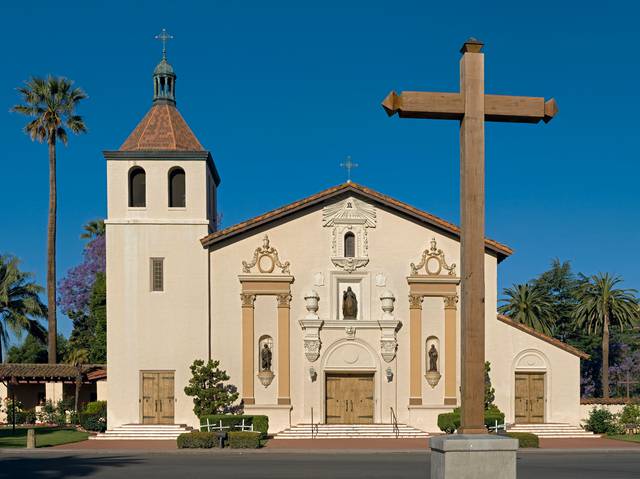
Human settlement in California goes back 50,000 years; California was home to thirty different tribal groups prior to the arrival of European explorers in the 1500s and now over 120 tribes are left. The first Europeans were the Spanish and Portuguese, who built a settlement in California, establishing twenty-one missions in California by the late 1700s. Many of these missions survive today, including the one in Santa Barbara.
After the Mexican War for Independence in 1821, California became a part of Mexico for 25 years until 1846 where it briefly became a sovereign nation before it was annexed by the United States in 1846, and has since then had an image as the "land of opportunity" and the final destination of luck-seekers. In 1848 the discovery of gold in the Sierra Nevada mountains kicked off the California Gold Rush, and California's non-native population surged from 15,000 to over 300,000 within two years. People who moved to California during the Gold rush were often called "49ers", a term that also serves as the nickname of the San Francisco football team. California became a state in 1850, and its population has increased steadily since then.
Los Angeles, a city which once boasted one of the longest streetcar networks in the world, boomed through defense contractors and later converted to a "freeway" city after the streetcars were dismantled. The city hosted Olympic Games twice (1932&1984) at times when the Olympic movement was in crisis and the games were largely seen as successes for the city as well as the Olympic movement. In the post-war years, California (especially the Bay Area) became a hotspot of counterculture, including popular music, the anti-war movement, and the LGBT community.
Today California is the most populous state in the US with over 38 million residents and still growing rapidly. Taken by itself California would rank as one of the world's top ten economies and Californian places like Silicon Valley, Hollywood and San Francisco are known globally and have shaped not only American but world culture. Politically, California is seen as a solidly "blue" state: it has a two thirds majority of Democrats in both chambers of the legislature and often provides the Democratic party with particularly left-wing ideas, especially on social issues. That said, the state actually contains a lot of political diversity, with conservative views prevalent in much of the state outside the densely populated Bay Area and Los Angeles County, particularly in the fertile but relatively sparsely populated Central Valley.
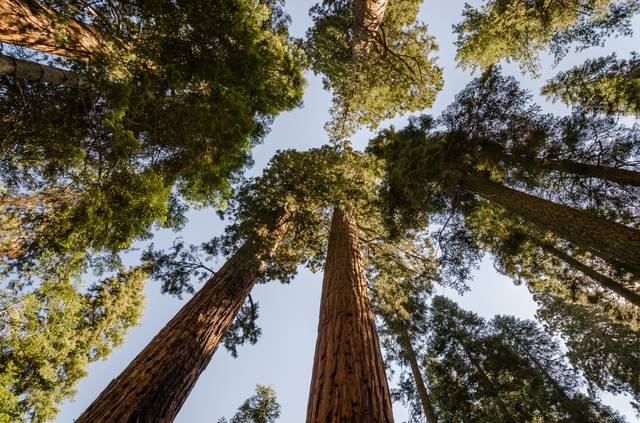 With over 160,000 square miles (411,000 km2) the landscape of California is vast and varied, and the stereotypical beach paradise is only the tip of the iceberg. The state contains extremes in elevation, with Mount Whitney at 14,505 feet (4,421 meters) being the tallest mountain in the lower-48 states, while less than 200 miles away Death Valley, at 282 feet (82 meters) below sea level, is North America's lowest point.
With over 160,000 square miles (411,000 km2) the landscape of California is vast and varied, and the stereotypical beach paradise is only the tip of the iceberg. The state contains extremes in elevation, with Mount Whitney at 14,505 feet (4,421 meters) being the tallest mountain in the lower-48 states, while less than 200 miles away Death Valley, at 282 feet (82 meters) below sea level, is North America's lowest point.
California's border to the west is made up of a rugged coastline along the Pacific Ocean. The coastal mountains rise up from the ocean and are home to redwood trees in the northern half. The Central Valley bisects California from north-to-south before giving way to the Sierra Nevada mountains, home of Yosemite National Park, Sequoia and Kings Canyon National Parks and other natural wonders. The southeastern part of California is dominated by desert, which covers 25% of California's total area. The Mojave is a high desert, with elevations ranging from 3,000 to 6,000 feet above sea level. This area receives less than six inches (152 millimeter) of rain each year.
The state's climate varies from subtropical at the coast to the brutal winters of the mountains to one of the world's hottest regions in the deserts. Rainfall is more common in the northern part of the state than in the south, and snow is rare except in the mountains.
The hottest temperature ever recorded in the Western Hemisphere, 134°F (56.6°C) was at Death Valley in 1913, and temperatures regularly exceed 120°F (50°C) during the summer. In contrast, winter temperatures in the mountains can drop below 0°F (-20°C).
Generally speaking most precipitation happens in the winter. California experienced droughts in 2006–2010, and 2012–2017. Some measures were put in place to cut water consumption. You will notice more and more lawns being replaced by drought resistant landscaping and once fertile farms in the Central Valley lying fallow due to lack of water.
For swimming, the Pacific Ocean is surprisingly cold even in July due to currents. September and October are optimal for swimming.
California is a very diverse state with many ethnic groups. California has large populations of people of varied backgrounds such as Mexican, Salvadoran, Guatemalan, Armenian, Iranian, Jewish, Chinese, Russian, Filipino, Eastern Indian, Korean, Japanese, Vietnamese, Cambodian, Thai, and Hmong. California also has large populations of African Americans and Native Americans.
Although typically considered to be a liberal state, Californians have a wide variety of political views which tend to vary based on region. The Central Valley, Orange County, San Diego, and Palm Springs area tend to be more conservative, while Los Angeles County and the San Francisco Bay Area are among the most progressive areas in the country.
California is a large and diverse state, with different cultures in each region.
California observes all the federal holidays, except Columbus Day, and adds Cesar Chavez Day on March 31st (or nearest weekday). However, some cities such as Coronado that have a large population of federal workers or military personnel do observe Columbus Day.
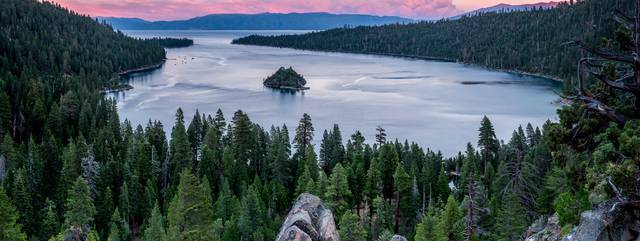 The California Constitution states that English is the official language of the state of California, but in reality, this rule is treated as a floor rather than a ceiling, and one should regard California as a multilingual state. American English is the main language and Spanish is the de facto second language, and a knowledge of even rudimentary Spanish is useful in most cities from Sacramento to San Diego. Los Angeles has some of the largest Hispanic populations north of Mexico. The state is highly influenced by Spanish culture, as California was once part of the Spanish empire until 1821, and then of Mexico for a short while after, until ceded to the USA after a decisive US victory in the war between Mexico and the US in 1848. In fact, some of its residents declared it an independent country for about a month (The Bear Flag Republic) in the midst of the Mexican-American War 1846–1848, and many of California's cities were named after saints or phrases in Spanish (such as Los Angeles, San Diego, San Francisco, Sacramento, and San Jose). Store and street signs are sometimes written in both English and Spanish in major metropolitan areas, and "Spanglish" (a mixture of English and Spanish) is often used and heard throughout the state. Even people with no Latino heritage whatsoever sometimes speak fluent Spanish or use common Spanish-derived expressions when speaking English. Most businesses in California have at least a few employees who are bilingual in English and Spanish. Some restaurants in fact may have a workforce that is more fluent in Spanish than English. Chinese is also spoken throughout California, and areas with a large number of Chinese residents or businesses have Chinese signage. Japanese, Tagalog, Korean, Vietnamese, Hindi, Punjabi, and Khmer are also spoken among Asian Californian populations. Big cities like Los Angeles or San Francisco also tend to have communities of essentially any ethnicity imaginable, and there is a good chance you can hear their language and have an opportunity to consume their culture's food. Los Angeles, for example, boasts quite a large Ethiopian neighborhood.
The California Constitution states that English is the official language of the state of California, but in reality, this rule is treated as a floor rather than a ceiling, and one should regard California as a multilingual state. American English is the main language and Spanish is the de facto second language, and a knowledge of even rudimentary Spanish is useful in most cities from Sacramento to San Diego. Los Angeles has some of the largest Hispanic populations north of Mexico. The state is highly influenced by Spanish culture, as California was once part of the Spanish empire until 1821, and then of Mexico for a short while after, until ceded to the USA after a decisive US victory in the war between Mexico and the US in 1848. In fact, some of its residents declared it an independent country for about a month (The Bear Flag Republic) in the midst of the Mexican-American War 1846–1848, and many of California's cities were named after saints or phrases in Spanish (such as Los Angeles, San Diego, San Francisco, Sacramento, and San Jose). Store and street signs are sometimes written in both English and Spanish in major metropolitan areas, and "Spanglish" (a mixture of English and Spanish) is often used and heard throughout the state. Even people with no Latino heritage whatsoever sometimes speak fluent Spanish or use common Spanish-derived expressions when speaking English. Most businesses in California have at least a few employees who are bilingual in English and Spanish. Some restaurants in fact may have a workforce that is more fluent in Spanish than English. Chinese is also spoken throughout California, and areas with a large number of Chinese residents or businesses have Chinese signage. Japanese, Tagalog, Korean, Vietnamese, Hindi, Punjabi, and Khmer are also spoken among Asian Californian populations. Big cities like Los Angeles or San Francisco also tend to have communities of essentially any ethnicity imaginable, and there is a good chance you can hear their language and have an opportunity to consume their culture's food. Los Angeles, for example, boasts quite a large Ethiopian neighborhood.
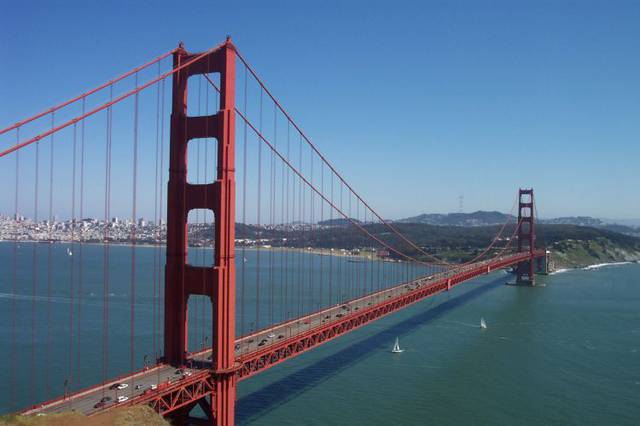
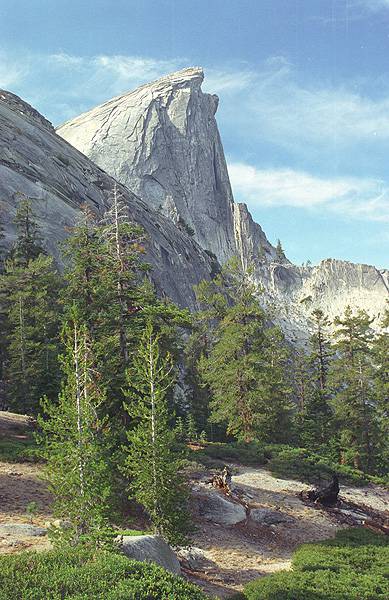
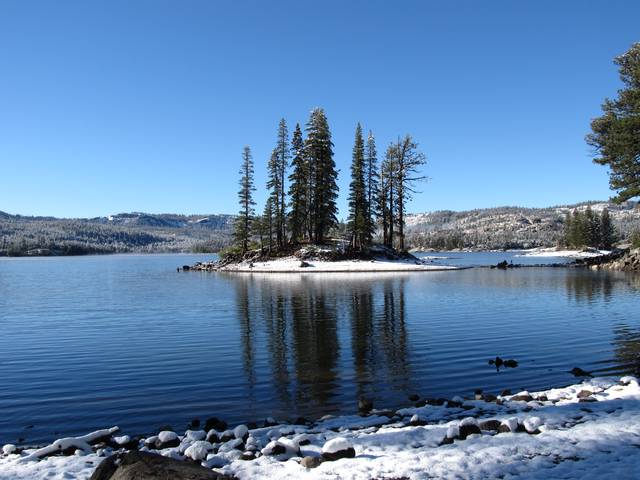
- El Camino Real (The Royal Road) — a historic road linking the 21 Spanish missions of Alta California (modern day state of California) offering a fascinating look into California's history
- Pacific Coast Highway — tour up and down the iconic California coast, along Big Sur, all the way up to its end where it merges into the US 101, which goes up to Washington state.
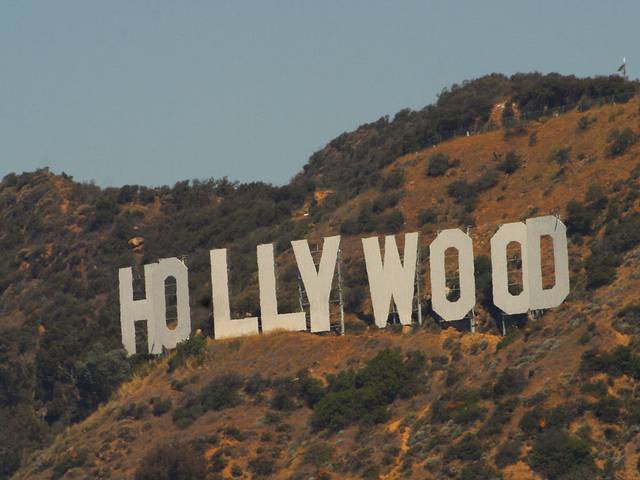
- Ski at one of the great resorts near Lake Tahoe or Big Bear.
- Try your hand at surfing or work on your tan in Orange County or Santa Monica.
- The long coastline offers some great California scuba diving.
- Climb a mountain and camp in the Sierra Nevada or Shasta Cascades.
- See California's amazing wildflowers. From March through May, the California Wildflower Hotline at +1 818 768-3533 offers the latest information on the best places to view wildflowers throughout Southern and Central California. The hotline and website are updated every Thursday evening. More than 90 wildflower sites are included. The hotline, operating more than 25 years, is run by the Theodore Payne Foundation for Wild Flowers and Native Plants, Inc.
- Listen to music at the Northern California Blues Festival. The fastest growing festival of its kind comes in June to Sacramento County around Father's day each year and usually features a spectacular line-up of Blues artists. Event benefits Through the Mind, a non-profit providing free alternative mental health to America's Veterans.
- Visit one of the many theme parks in California, such as Disneyland or Six Flags Magic Mountain.
Ski at one of the great resorts near [[Lake Tahoe]] or [[Big Bear Lake|Big Bear]].
Try your hand at surfing or work on your tan in [[Orange County (California)|Orange County]] or [[Santa Monica]].
Listen to music at the Northern California Blues Festival. The fastest growing festival of its kind comes in June to Sacramento County around Father's day each year and usually features a spectacular line-up of Blues artists. Event benefits Through the Mind, a non-profit providing free alternative mental health to America's Veterans.
Visit one of the many theme parks in California, such as [[Disneyland]] or [[Six Flags Magic Mountain]].
T-shirts flags and other items with the famous "bear flag" are available virtually everywhere a tourist might wander. Usually US Dollars and common credit or debit cards are the only accepted modes of payment. You might have some luck with Mexican Pesos near the immediate border area, but exchange rates are usually pretty bad. California stores no longer give out free plastic bags, except for fresh grocery produce and meats. Reusable plastic bags cost a minimum ten cents (by law), and many stores sell cloth bags for one or two dollars. Sales tax varies from county to county.
California doesn't have a very well-defined cuisine of its own, but rather a remarkably diverse food scene defined by its large population of immigrants of varied ethnic backgrounds and its access to one of the most productive agricultural regions this side of the planet. The culinary style referred to as "Californian cuisine" focuses on imaginative fusions of other cuisines, typically with heavy attention to presentation and an emphasis on using freshly prepared local ingredients, and has been somewhat subsumed into the general trend of "New American" cuisine.
Almost any dish you can imagine can be found somewhere in California, with the cuisines of The Americas and Asia heavily represented and those of nearly every other country available to a lesser extent. More "North American" fare includes everything from burger shacks to vegetarian, organic and even completely vegan restaurants; the Californian love for food has left it with one of the most diverse restaurant scenes in North America. The large cities have the most variety, while things get simpler and more meat-heavy as you get more rural.
There are a handful of distinctive California dishes, although most of them have been adopted and adapted throughout the US.
- Cobb salad - a cold salad of bacon or ham, chicken, boiled eggs, avocado, tomato, lettuce, and bleu cheese, with a vinaigrette dressing. Traditionally it's chopped fairly fine, but in modern times it's served in a variety of ways, and sometimes with ranch dressing instead of the traditional vinaigrette. It was invented at the Brown Derby restaurant in LA.
- French dip sandwich - invented somewhere in LA, the exact location is subject to dispute, but it's a warm sandwich of thinly sliced roast beef on a roll that's dipped into beef broth.
- Cioppino - a seafood stew developed by Italian immigrants in San Francisco, it resembles various Italian fish stews but includes local ingredients like chopped Dungeness crab.
- The Mission Burrito - a San Francisco tradition characterized mainly by its great size and caloric content, featuring copious amounts of beans and rice in addition to cheese, meat and/or vegetables.
- California Burrito - a San Diego specialty, it's a carne asada (spicy grilled steak) burrito, stuffed with french fries.
- Santa Maria Barbeque - This is a central coast tradition. It's a bottom sirloin beef roast (the cut is locally known as tri-tip), where the fat hasn't been trimmed. It's suspended high above a hot oak fire, fat side up, so it cooks slowly and the fat melts and tenderizes the meat. It's usually served thinly sliced with tortillas or bread, salsa, onions, avocado, and other side dishes.
- Chop Suey - the original "American Chinese" dish was popularized as cheap food for laborers during the California gold rush. While it's increasingly hard to find, many other American Chinese dishes were first created in San Francisco's Chinatown. However, there has been a trend amongst Californians to seek out more authentic Chinese food and you're actually more apt to find classic American Chinese fare like crab rangoon or General Tso's chicken in other states.
California's classic burger chain In-N-Out has expanded to states as far east as Texas—see Fast food in the United States and Canada for more. Outside of fast food, California chains that you'll be hard-pressed to find elsewhere include:
- Ike's. Casual sandwich joint with 50+ locations, mostly in California though a few are in Nevada. The menu varies by location, but in general about half the menu has meat and half is vegetarian; many vegetarian options can be made vegan. The sandwiches are filling and flavorful but not excessively heavy.
- Three Twins Ice Cream. You can buy their ice cream at supermarkets and convenience stores all over the country, but the ice cream shops are only in California (plus a few new branches in Japan and Korea). Organic ice cream with somewhat distinctive flavors. They usually have a couple of vegan/non-dairy options.
Ike's. Casual sandwich joint with 50+ locations, mostly in California though a few are in Nevada. The menu varies by location, but in general about half the menu has meat and half is vegetarian; many vegetarian options can be made vegan. The sandwiches are filling and flavorful but not excessively heavy.
Three Twins Ice Cream. You can buy their ice cream at supermarkets and convenience stores all over the country, but the ice cream shops are only in California (plus a few new branches in Japan and Korea). Organic ice cream with somewhat distinctive flavors. They usually have a couple of vegan/non-dairy options.
California is known for its fine wines and gourmet beers. Napa, Sonoma and Mendocino are premier wine districts north of San Francisco, but there are others in the Central Coast region and even the San Diego region where suitable microclimates have been found. The inland Central Valley region has hotter summers and traditionally produced inexpensive bulk wines, but quality has been improving with winemaking innovations.
Californians tend to view wine as a natural accompaniment of food or socializing, overlooking its alcoholic content more easily than with distilled spirits. However police crackdowns on drinking and driving are increasingly severe with roadblocks and random checks. Conviction for driving with a blood alcohol level over .08 percent is likely to bring serious legal and financial consequences. Drivers with lower blood alcohol can still be convicted for DUI (driving under the influence) if they fail field sobriety tests such as walking a straight line. You must be 21 years of age to drink any alcoholic beverage. Underage drinking is taken very seriously so if you are in a club or bar and appear to be under 30 you should be ready to present identification showing your age.
For beer, California also has a lot of microbreweries. Sierra Nevada, in Chico, is one of the biggest microbreweries in North America. In the Central Coast the midsized brewery Firestone Walker in Paso Robles is a good addition to the local wineries in the area. In San Diego, Stone Brewing Company offers a great variety of beers that can be purchased throughout the state. There are over 200 microbreweries in California.
Occasionally, there will be an advisory issued for air stagnation, which is a phenomenon involving an air mass that cannot move and therefore stagnates over an area for an extensive period of time. Air pollutants can cause breathing difficulties for those with existing respiratory conditions.
If you have a respiratory condition, refer to the National Weather Service website on air quality to see if any such advisories have been issued for the areas you might visit.
Like many western states, California has had cases of hantaviral pulmonary syndrome, 42 confirmed cases in the state since 1993. Realistically, however, hantavirus is of very little concern to the traveler; but sensible precautions should be applied. Do NOT venture in a wild animal's den or handle any dead animals; particularly rodents, as rodents seem to be the primary vector of the illness. There is no cure for the disease, treatment mainly consists of supportive therapies. The main defense against the virus is prevention.
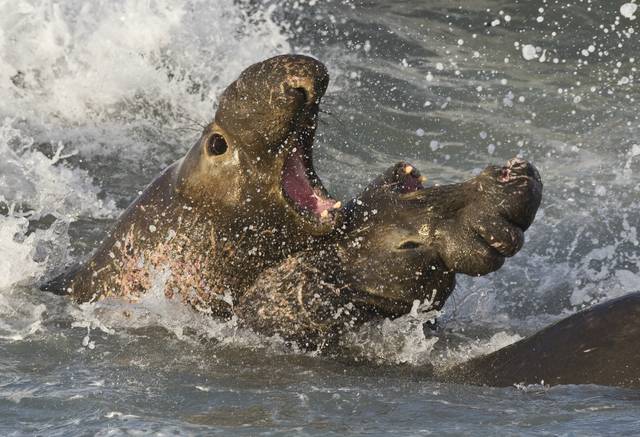
Due to California's proximity to the international boundary with Mexico, visitors should be cautious while in areas near the border.
- Beware Customs and Border Patrol (CBP) checkpoints and patrols. CBP is legally allowed to stop you or your vehicle solely in order to inquire about your citizenship and residency status within 100 miles of any international border (in this instance, the US-Mexico border). Non-whites — and especially Latinos — absolutely should expect to be profiled, targeted, and harassed by these government agents.
- Know where you are at all times, follow good safety procedures and use common sense when making decisions.
- Do not pick-up hitch hikers.
- Keep valuables, including spare change, out of sight and lock your vehicle.
- Avoid traveling in well-marked but unofficial "trails."
- Avoid hiking or camping in areas of major border activity. If you are visiting a national or state park, consult park staff to help plan backcountry travel in safer areas.
Thousands of U.S citizens visit the state of Baja California, Mexico from California every year with the majority of travelers returning from an enjoyable experience. However, a minority of travelers do experience difficulties and serious inconveniences while traveling to Mexico. Before traveling to Mexico, ensure that you have the proper documentation and are familiar with the recommendations for foreign travel from the U.S. Department of State, Bureau of Consular Affairs
There are six border crossings between California and Mexico: two between San Diego and Tijuana, one between Tecate and Tecate, two between Calexico and Mexicali, and one between Andrade and Los Algodones. The United States operates a consulate-general in Tijuana and a consulate in Mexicali. Mexico operates Consulates in Calexico, Fresno, Los Angeles, Oxnard, Sacramento, San Bernardino, San Diego, San Francisco, San Jose and Santa Ana.
The usual inner city crime can be found in the worst parts of Los Angeles, San Francisco, and Oakland. Central Valley cities, such as Sacramento, Stockton, and Fresno also have gang problems. Northern coastal cities such as Eureka have an ongoing problem with significant drug activity, primarily the prevalence of methamphetamine, and property crimes. However, most California cities are very safe. As long as you take basic precautions against petty crime and stay out of obviously run-down neighborhoods, you will probably have a safe and pleasant visit. Be smart and you will be safe.
If you are traveling along the Pacific Coast Highway or Highway 101, you may notice there are a substantial number of hitch-hikers along the way. Do not pick up hitch-hikers.
Drugs are illegal in California, with the noted exception of marijuana. Adults 21 and over are now allowed to possess, use, and cultivate small amounts of marijuana, so long as it is not consumed in public or possessed on the grounds of a school or day care center. Legal dispensaries (except for those licensed for medical use) have not yet been established, but adults in California are allowed to share up to 1oz of marijuana flowers or 8 grams of concentrate. Marijuana is still illegal under federal law, so do not carry marijuana past state lines - even to another state where it is legal - as this will be considered drug trafficking and subject to harsh punishment.
If you find yourself in an emergency situation (of any kind), dial 9-1-1 on your phone or from any (available) phone. It is a free call from a payphone.
Earthquakes that are large enough to cause extensive damage are rare, but remain a matter of reality for the state. The biggest dangers in an earthquake are falling objects and windows which shatter explosively. In the event of an earthquake, face away from windows and hide under any sturdy table or desk that may be available. If you are indoors, do not run outside! Falling building facades are more likely to cause severe injuries than anything inside. Contrary to popular belief do not stand in a door frame it is not safe at all, this is merely a myth. You're more likely to get your fingers caught in the frame from all the shaking and swinging of the door than gain protection from a falling object. If outdoors, stay away from buildings and stay out from under power lines.
Along the southern most border of California-Nevada, as well as the border of California-Arizona, California has elaborate desert landscapes which extend into the south central regions of the state; the most famous (or infamous) being the region known as Death Valley, where several tourists and hikers have indeed met their fate while exploring the region.
If you are planning on traveling or hiking into these locations, follow desert survival guidelines. Be sure to take plenty of water (at least one gallon per person, per day), sunscreen and wear light clothing. Let someone know where you are going and when you expect to return.
Be sure to have a full tank of gasoline prior to traveling by car into these regions, as many desert locations are extremely remote and without any services for several miles (in some cases nearly 100 miles). To break down in these regions could be extremely unpleasant in the best case scenario, tragic in the worst.
Also, it is best to hike during the earlier part of the day, as thunderstorms tend to develop suddenly during the afternoon. In the event you encounter inclement weather conditions, seek high ground immediately! Thunderstorms can cause flash flooding in canyons and other low-lying areas.
The incidence of earthquakes in California raises the concern for potential threats of tsunamis. Though tsunamis occur very rarely, a great deal of California's coastline is in a tsunami zone. For more information on the state's hazard assessment, visit the NOAA Center for Tsunami Research website.
Wildfires are quite common between May and October. Take a few precautions – clear the area around campfire pits/rings in campgrounds, never leave flames unattended (even artificial ones), avoid weapon use in dry areas. The strongest impact from fires is smoke. Smoke affects areas dramatically exceeding the size of the root fire. Travelers with respiratory issues should consult visitor information sites before visiting areas where fires are occurring.
Unfortunately, fire season leads directly into the usual rainy season, and hilly areas where the vegetation has burned are particularly vulnerable to destructive and sometimes deadly mudslides. Heed any evacuation warnings that are issued.
Bears are found in the Sierra Nevada and all neighboring parts of the state. They're rarely dangerous, but should never be approached. If you are camping, you need to ensure that food, food waste, and other scented items such as soap and toothpaste are secure from them. Mountain lions are rarely seen, but live in all mountainous parts of the state and once in a while attack humans. If you see one, yell and wave your arms to make yourself appear as large as possible. Coyotes are quite common, even in relatively populated areas like the Hollywood Hills. They pose little danger to humans, but will attack dogs, cats and other domestic animals. Many animals, most notoriously bats, can carry rabies. When hiking, watch for ticks, which can carry Lyme disease, and rattlesnakes. California is home to 2 potentially deadly species of spiders - the black widow and the brown recluse - if you don't go poking around abandoned structures and woodpiles, you're very unlikely to encounter them. If you're bitten by any animal, seek immediate medical attention. Shark attacks have happened once in a great while at California beaches, and deadly sharks such as great whites do roam the California coast, but unless a shark has been repeatedly sighted by a specific beach (the local media will broadcast warnings) this is an extremely remote possibility.
Poison oak can be found almost anywhere in the state, but is particularly common in Southern California, the Central Coast, the Bay Area, and any Coast Redwood woodlands. It's toxic throughout the year, even during the winter when it's lost its leaves. Sensitivity varies by individual, but many people can end up with a very nasty, blistering rash by contacting it. See the linked article for treatment options. California is also home to several lethal varieties of mushrooms, which can be particularly dangerous to would-be gatherers because some of them resemble edible varieties found elsewhere in the world. Even if you're an expert on mushroom varieties where you live, don't assume you're safe gathering them in California.
California is filled with a very diverse group of people. Northern and Southern California have notably different cultures, while the rural areas in the Central Valley and Eastern portions of the state differ even more significantly. Sensitive topics include immigration, race, gay rights, water rights, land-use, and politics. Los Angeles and the San Francisco Bay Area are especially well-known for being some of the most politically liberal areas in the US, and continue to serve as some of the world's major centers of counterculture. Conversely, parts of California, particularly the Central Valley, are some of the most conservative parts of the US. Of course, it's unwise to assume any individual's political leaning based on where they live.
- Arizona – Home to the Grand Canyon, Arizona borders California to the southeast across the Colorado River.
- Nevada – California's eastern neighbor is best known as the home of Las Vegas, although towns such as Reno and Carson City are also good day-trip opportunities for visitors wanting to explore the Silver State.
- Oregon – Sharing a border to the north, Oregon is home to impressive mountains and extensive forests.
- Hawaii – Many visitors to America's fiftieth state depart through California on their journey across the Pacific.
- Baja California – Those traveling across the border to Mexico can visit some of that country's most impressive sea and landscapes.
[[Arizona]] – Home to the [[Grand Canyon]], Arizona borders California to the southeast across the Colorado River.
[[Nevada]] – California's eastern neighbor is best known as the home of [[Las Vegas]], although towns such as [[Reno]] and [[Carson City]] are also good day-trip opportunities for visitors wanting to explore the Silver State.
[[Oregon]] – Sharing a border to the north, Oregon is home to impressive mountains and extensive forests.
[[Hawaii]] – Many visitors to America's fiftieth state depart through California on their journey across the Pacific.
[[Baja California]] – Those traveling across the border to [[Mexico]] can visit some of that country's most impressive sea and landscapes.
